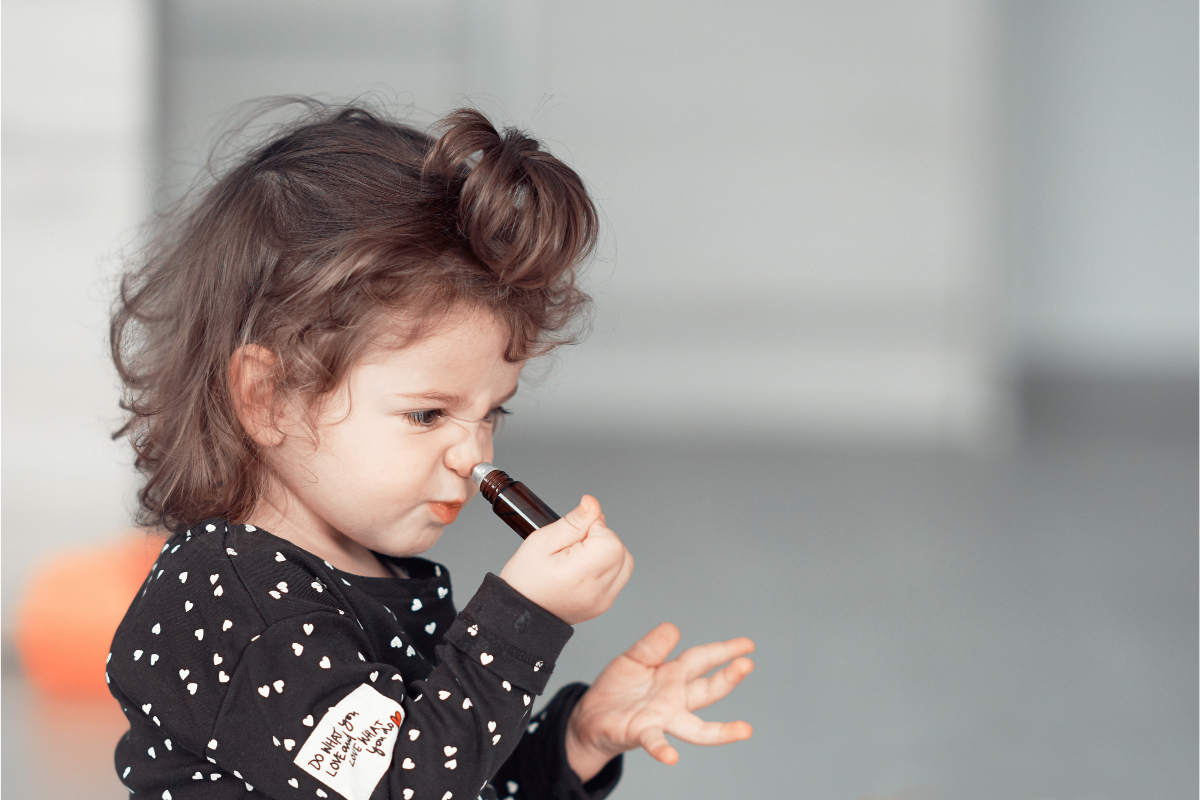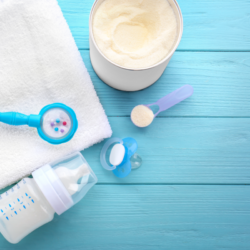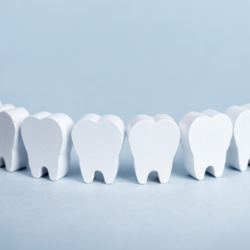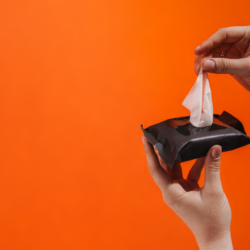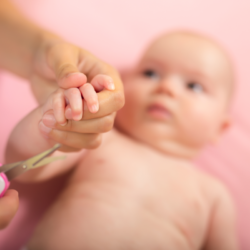Health professionals have long used essential oils for their therapeutic properties. In fact, they can be used to treat a multitude of health problems and have relaxing properties. However, there is some debate about the safety of essential oils for children. Are they safe for use on children? In this article, we’ll look at the benefits and risks associated with using essential oils on children.
What is an essential oil?
Essential oils are concentrated plant extracts containing the active substances that give them their beneficial properties. The European Pharmacopoeia defines essential oils as fragrant compounds obtained mainly by steam distillation of plant matter. These substances play a significant role in an interdisciplinary approach to health care, particularly in pharmacy, where their use enables medical advice to be personalised.
In the plant world, these essences have a variety of functions. These range from defence against pathogens to energy reserves. These compounds are extracted from various anatomical parts of the plant, including the bark, pods, roots and flowers. Two main methods are used: mechanical expression and distillation. Each method has its own particularities and contributes to the biochemical richness of essential oils.
Aromatherapy, introduced in 1928, is the discipline that uses these oils for therapeutic purposes. It encompasses a variety of methods and techniques, including atmospheric diffusion, topical application and sometimes oral ingestion. Essential oils have a wide range of therapeutic properties, encompassing effects such as anti-infectives, anti-inflammatories and antispasmodics, among others.
Their regulation depends on their use, and can vary between the cosmetics, pharmaceutical and biocides sectors. The physico-chemical properties of oils, such as their solubility in different solvents and their density, are essential to understanding their therapeutic use. The aromatogram, a method of analysis, makes it possible to correlate the biochemical structure of oils with their therapeutic efficacy.
Specific training in aromatherapy is crucial to the safe and effective use of these complex substances. Essential oils represent a range of natural compounds with vast and diverse applications, from natural medicine to aromatherapy and perfumery.
The use of essential oils in children
Essential oils can be beneficial for children in certain situations. For example, they can help relieve the symptoms of colds, coughs and asthma. They can also help calm and soothe children, promote restful sleep and reduce stress and anxiety.
Essential oils (EO) offer a natural alternative for treating a range of common childhood ailments, such as colds, eczema and motion sickness. However, the use of these concentrated substances requires due diligence to minimise the associated risks.
It is imperative to consult a qualified health professional, such as an aromatherapist or paediatrician, before undertaking any essential oil therapy for children. These experts will provide tailored advice on the types of oils that are both safe and effective, depending on the child’s age and state of health.
Particular attention should be paid to the dilution of EOs, as applying them directly to children’s sensitive skin can cause adverse reactions. It is also strongly recommended to carry out a skin test by applying a few drops of the diluted oil to the crease of the elbow and waiting 24 hours to observe any reaction.
However, it is important to take precautions when using essential oils on children. As essential oils are highly concentrated, they can cause undesirable effects if used incorrectly.
What are the precautions for use?
The standard precautions applicable to adults are equally, if not more, relevant to children. Essential oils should not be applied to the eyes, nose or ears. Extra care is also required for so-called photosensitising oils, which mean that exposure to the sun should be restricted for at least 12 hours after application.
Atmospheric diffusion and the cutaneous route are generally the safest methods of administration for children. Oral administration may be considered, but only under medical supervision. Bottles of essential oils should be kept out of the reach of children to avoid accidental ingestion.
It is crucial to refer to the technical data sheets and advice on use specific to each oil. What’s more, our team of aromatherapy experts is at your disposal for any further advice you may need. Safety is paramount, especially when it comes to our children’s health. It is therefore essential to follow established guidelines and seek appropriate medical advice to ensure the safe and effective use of essential oils in children.
Risks associated with the use of essential oils in children
Essential oils can be toxic if ingested or if they come into contact with the eyes or skin. Children are particularly vulnerable to the undesirable effects of essential oils because of their immature immune systems and slower metabolism.
Certain essential oils, such as eucalyptus, peppermint and camphor, can cause bronchial spasms and breathing difficulties in children. Essential oils can also cause allergic reactions in some children.
Despite their innocuous appearance, essential oils carry significant health risks, even in small doses, and cases of poisoning are frequent in young children. Data from the Centre antipoison du Québec (CAPQ) reveals that, in 2016, 62 cases of poisoning linked to essential oils were recorded. Of these cases, 61% involved children aged 0 to 5, and 5% involved children aged 6 to 15.
Most of these cases occurred when children tried to taste the essential oils. Fortunately, in more than 80% of cases, the effects are minor or even non-existent, according to Dr Maude St-Onge, Medical Director of the Quebec Poison Control Centre. However, cases of serious poisoning are reported from time to time.
The risks associated with essential oils depend on a number of factors, including :
- The type of oil and its active ingredients.
- The route of exposure (ingestion, inhalation, direct contact).
- The concentration of the product (pure oils are often more risky).
- The quantity ingested.
- How quickly it is absorbed by the body.
Cases of poisoning
If ingested, the main symptoms of intoxication include irritation of the mucous membranes of the mouth, nausea, vomiting and diarrhoea. Some essential oils, such as mugwort, clove, eucalyptus, fennel, spearmint, cedarwood, sage and rosemary (containing camphor), can cause convulsions. In addition, several essential oils are associated with drowsiness that can even lead to coma, while others can affect the kidneys, liver or blood.
In the event of exposure to essential oils, whatever the route of exposure, it is imperative to contact the Poison Control Centre immediately for specific advice on what to do. These precautions are essential to ensure health and safety, especially for children, when using essential oils.
The most common poisonings in young children (aged 0-5) often result from the unintentional ingestion of substances, with medicines (such as acetaminophen and cold medicines) and household products (including detergents, cosmetics, hygiene products, etc.) being the main culprits.
What should you do if you swallow it?
If your child accidentally swallows a potentially dangerous product, it is essential to take the following steps:
- Contact the Poison Control Centre immediately.
- Rinse and clean the child’s mouth.
- Do not attempt to induce vomiting or administer an antidote to neutralise the product (such as milk or activated charcoal).
- Call 15 if the child is unconscious, has breathing problems, convulsions or difficulty swallowing.
- If possible, keep the original container of the product on hand to help the emergency services.
How can I prevent poisoning?
To prevent poisoning in children, here are some important recommendations:
- Avoid placing essential oil diffusers within the reach of children.
- Follow the product’s storage instructions, in particular by keeping it away from air and light.
- Avoid buying products whose ingredients are not clearly detailed.
- Do not talk about medicines as if they were sweets in the presence of children.
- Avoid opening medicine containers in front of children.
- Keep all potentially dangerous products (medicines, detergents, etc.) in their original containers and keep them out of children’s reach, preferably in a closed cabinet, including those fitted with childproof locks.
Essential oils safe for use on children
Several essential oils can be used safely on children, provided they are used correctly.
Firstly, lavender is safe and versatile and can help calm and soothe children, promote restful sleep and reduce stress and anxiety. Secondly, chamomile is safe for use on children. It can help calm and soothe children and promote restful sleep.
Finally, sweet mint essential oil is considered safe for use in children. However, it should be used with caution.
Some essential oils are suitable for safe use in children under 6, provided that appropriate precautions are taken, in particular by diluting them correctly.
Which essential oils should I use?
Here is a list of these essential oils and their recommended uses:
- True Lavender essential oil: This oil is good for the skin and can be used to soothe diaper rash in babies when diluted in a vegetable oil. It also has calming properties that promote sleep.
- Lemon essential oil: can be used to relieve motion sickness by inhaling a few drops on a carrier.
- Petit Grain Bigarade essential oil: This oil is antispasmodic, antibacterial, soothing and healing.
- Ravintsara essential oil: With anti-inflammatory, expectorant and antitussive properties, it is effective against ENT problems such as colds, coughs and nasopharyngitis.
- Eucalyptus Radiata essential oil: recommended for respiratory infections such as rhinitis and oily coughs.
- Chamomile Matricaria essential oil: It has anti-inflammatory properties and soothes itching, particularly that caused by insect bites.
- Tea Tree essential oil: This versatile oil is suitable for children aged 3 and over and has antibacterial, antifungal, anti-inflammatory, antiparasitic and antiviral properties. It can be applied behind the ear (not in the ear) diluted in a vegetable oil in the event of otitis.
- Thyme Linalol essential oil: Recommended for its antiseptic properties, particularly in cases of ENT infections. It should be diluted before application to the skin or diffused.
- Marjoram essential oil: It has antispasmodic, relaxing and sedative properties, useful for managing stress in children when diffused or inhaled.
- Saro essential oil: This oil can be used on children by diluting it in a vegetable oil, but is not suitable for babies under 3 months old. It has antiviral, antibacterial and antifungal properties, so use with caution.
Conclusion
In conclusion, essential oils can offer many health benefits for children. However, parents must use essential oils carefully and wisely, as incorrect use can be toxic. It is vitally important to seek the expertise of a qualified health professional before using essential oils on children. This will help determine which oils are the safest and most effective for their health. By following the necessary precautions and using essential oils responsibly, parents can help improve their children’s health in a natural and safe way.
FAQ
Q1. Are essential oils safe for use on infants? R1. It is preferable to avoid using essential oils on infants under the age of three months.
Q2. Can EOs cause allergic reactions in children? R2. Yes, essential oils can cause allergic reactions in some children.
Q3. Can they be used to treat eczema in children? R3. Yes, some EOs can be beneficial in treating eczema in children, but you should consult a qualified health professional before using them.
Q4. Can they be used to treat ADHD in children? R4. There is insufficient evidence to support the use of essential oils to treat ADHD in children.
Q5. Can essential oils be used safely during pregnancy? R5. It is possible to use certain essential oils safely during pregnancy, provided you first consult a qualified health professional. It is important not to use them without medical advice.
Q6. Can essential oils be used to treat asthma in children? R6. Certain essential oils can be used to reduce the symptoms of asthma in children. However, a qualified health professional must be consulted beforehand.
Second part of the FAQ
Q7. Can essential oils cause liver or kidney damage in children? R7. In fact, when ingested, essential oils can cause kidney and liver damage. It is important never to give them orally to children.
Q8. Can essential oils be used to treat colic in infants? R8. Certain qualified health professionals can help relieve the symptoms of colic in infants by using certain essential oils. It is important to consult them before using them.
Q9. Can essential oils be used to treat ear infections in children? R9. Yes, some essential oils can help relieve the symptoms of ear infections in children. However, you should consult a qualified health professional before using them.
Q10. How do I know if an EO is safe for use in children? R10. A qualified health professional should be consulted before using essential oils on children. They can help you determine which essential oils are safe and effective for your child.
Sources
- https://www.passeportsante.net/fr/Actualites/Dossiers/DossierComplexe.aspx?doc=10-huiles-essentielles-jeunes-enfants
- https://verdictsante.protegez-vous.ca/nouvelles/sante/enfants-et-huiles-essentielles-gare-aux-intoxications#:~:text=It is also recognised that, up to and including coma.
- https://pranarom.fr/blogs/conseils-experts/booster-les-defenses-naturelles-de-vos-enfants-grace-aux-huiles-essentielles
- https://fr.puressentiel.com/blogs/conseils/comment-soigner-ses-enfants-avec-les-huiles-essentielles
- http://agence-prd.ansm.sante.fr/php/ecodex/frames.php?specid=69068587&typedoc=R&ref=R0389007.htm
- https://ansm.sante.fr/uploads/2020/11/04/20201104-lp-111114-terpenes.pdf
- https://www.anses.fr/fr/system/files/NUT2018SA0096.pdf
- https://www.vidal.fr/parapharmacie/utilisation/bon-usage-phytotherapie-plantes/plantes-enfants.html

